Russia is increasingly using glide bombs to bomb Ukraine's defenses, while Kiev has not found an effective way to deal with them.
Unlike conventional bombs that fall freely after being released, Russian glide bombs are equipped with control or navigation systems, allowing them to change their flight trajectory to attack targets further away.
Some Russian guided bombs are also equipped with rear-mounted thrusters, turning them into cheap cruise missiles. These weapons allow Russian bombers and fighter bombers to avoid having to fly into Ukrainian air defense zones to attack targets.
Glider bombs allow Russia to attack Ukrainian defenses from beyond the range of its artillery, while also allowing its fighter jets to avoid enemy anti-aircraft missiles. The high destructive power of the bombs, which can weigh up to three tons, makes up for their lack of accuracy, as they can destroy a fortified building and inflict heavy casualties on enemy infantry within a radius of hundreds of meters.
Su-34 fighter bombers dropped FAB-500 glide bombs on Ukrainian positions south of Donetsk on March 29. Video : Russian Ministry of Defense
Experts say that glide bombs are one of the most effective weapons that have helped Russia make recent advances on the battlefield. They also risk causing Ukraine to lose more experienced soldiers, who have little effective countermeasures.
Their short flight time, small radar cross-section and unpredictable trajectory make them difficult to intercept. Ukraine has warned that glide bombs could cause serious problems, and Russian bombings in recent months have proven this to be true.
"Russian forces have significantly increased their bombing of Ukrainian positions on the frontline and in the rear with guided and unguided glide bombs," the Washington-based Institute for the Study of War (ISW) said. "Russia continued to use glide bombs for tactical effect during its campaign to storm the Avdeevka stronghold, which it captured in February."
Both Russia and Ukraine had advanced air defense systems, so neither side had air superiority in the first two years of the conflict. However, as Russia closed in on the Avdeevka stronghold, glide bombs began to be widely used. Ukraine reported an increase in the frequency of glide bomb attacks in the final days of its hold on Avdeevka.
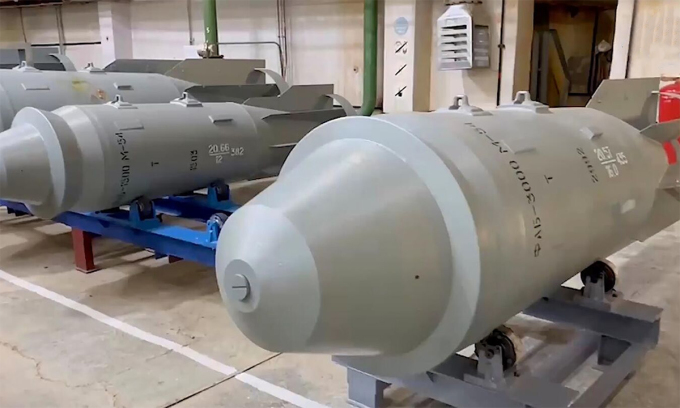
Three-ton FAB-3000 bomb at a Russian arms factory. Photo: Russian Ministry of Defense
George Barros, an expert at ISW, said Russia is gaining a better understanding of how to conduct large-scale attacks on Ukrainian cities or key infrastructure to probe enemy air defense capabilities.
"When the response capabilities of Ukraine's air defenses reach their limits, Russia will dispatch fighter jets to conduct air strikes with glide bombs," Barros said.
At Avdeevka, extremely powerful glide bombs were continuously dropped on Ukrainian fortifications. Experts say the high frequency of the bombing, not the accuracy of the glide bombs, was the main reason why Ukrainian positions could not hold out.
Russian Su-34 fighter bombers often drop glide bombs 50 kilometers or more from the front line, out of range of almost all of Ukraine's air defense systems, except for the US-made Patriot system, said Justin Bronk, an expert at the Royal United Services Institute (RUSI).
According to Bronk, glide bombs are only capable of attacking fixed targets, but are very effective when used to destroy fortified structures in areas of prolonged fighting such as Avdeevka.
“This makes the tactic of bombing with long-range weapons like glide bombs quite practical. They carry a much larger explosive payload than artillery shells or rockets, especially 1.5-ton bombs,” Bronk said. “They have a greater psychological impact than artillery shells in many ways.”
A Russian FAB-1500 glide bomb hits a Ukrainian position in the city of Krasnogorovka, Donetsk region on March 25. Video: Telegram/Iron Helmets
Ukraine's air defenses were once effective in preventing the Russian air force from controlling its skies, but their capabilities have been increasingly degraded by a lack of Patriot air defense missiles, while additional US aid has yet to arrive.
“If Ukraine had better air defenses, they could prevent Russia from using glide bombs by forcing enemy fighters to operate further away from the front line,” Barros said.
Lt. Gen. Ivan Gavrylyuk, Ukraine’s deputy defense minister, said on March 18 that Russia has dropped more than 3,500 bombs on Ukrainian positions since the beginning of the year, much higher than last year. Despite the frequency of the bombing, Russia’s bomb stockpile appears to show no signs of running out.
The Russian Defense Ministry announced last week that the country's defense industry has increased production of several types of bombs, including the half-ton FAB-500, the 1.5-ton FAB-1500, and the three-ton FAB-3000. Most of these bombs can be converted into glide bombs.
"Russia is consolidating its success with glide bombs," Barros said. "Russia has found a way to do it effectively, so they are rapidly increasing their bomb production."
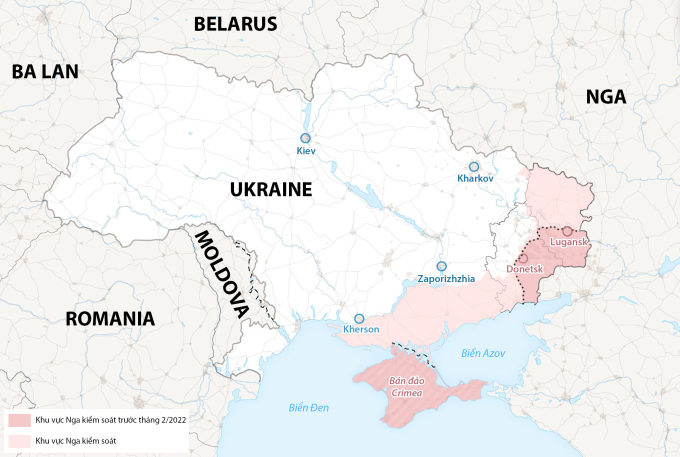
The situation of the war between Russia and Ukraine. Graphics: WP
Western experts say that to reduce the threat from glide bombs, Ukraine needs to significantly increase its air defense capabilities. President Volodymyr Zelensky has repeatedly said that the current air defense arsenal is not enough to protect Ukraine from constant attacks, and has regularly called on Western partners for more support.
However, the US Congress has yet to approve a $60 billion aid package for Ukraine after months of wrangling. The aid package promises to provide much-needed military supplies, including air defense systems and missiles for the Patriot system.
However, many Western experts warn that Russia's glide bombs are not the only factor that will decide the outcome of the war, because this country has a superior advantage in artillery compared to Ukraine. Russia's advantages, the increasingly depleted state of Ukraine's military supplies and the uncertain future of Western aid are making the battlefield outlook increasingly gloomy for Kiev.
"If the US does not approve additional aid, Ukraine will be at great risk of losing a lot of territory when Russia launches a large-scale offensive campaign this coming summer," Bronk warned.
Barros agrees that without weapons aid, Ukraine will have to continue withdrawing from many territories, and this is not only due to Russian glide bombs.
"If the situation on the battlefield does not change, Russia continues to maintain its current fighting style and ability to adapt to the situation, we have no reason to doubt that its air force will completely control Ukraine's airspace, which will have a major impact on the battlefield situation," Barros said.
Nguyen Tien (According to BI, AFP, Reuters )
Source link


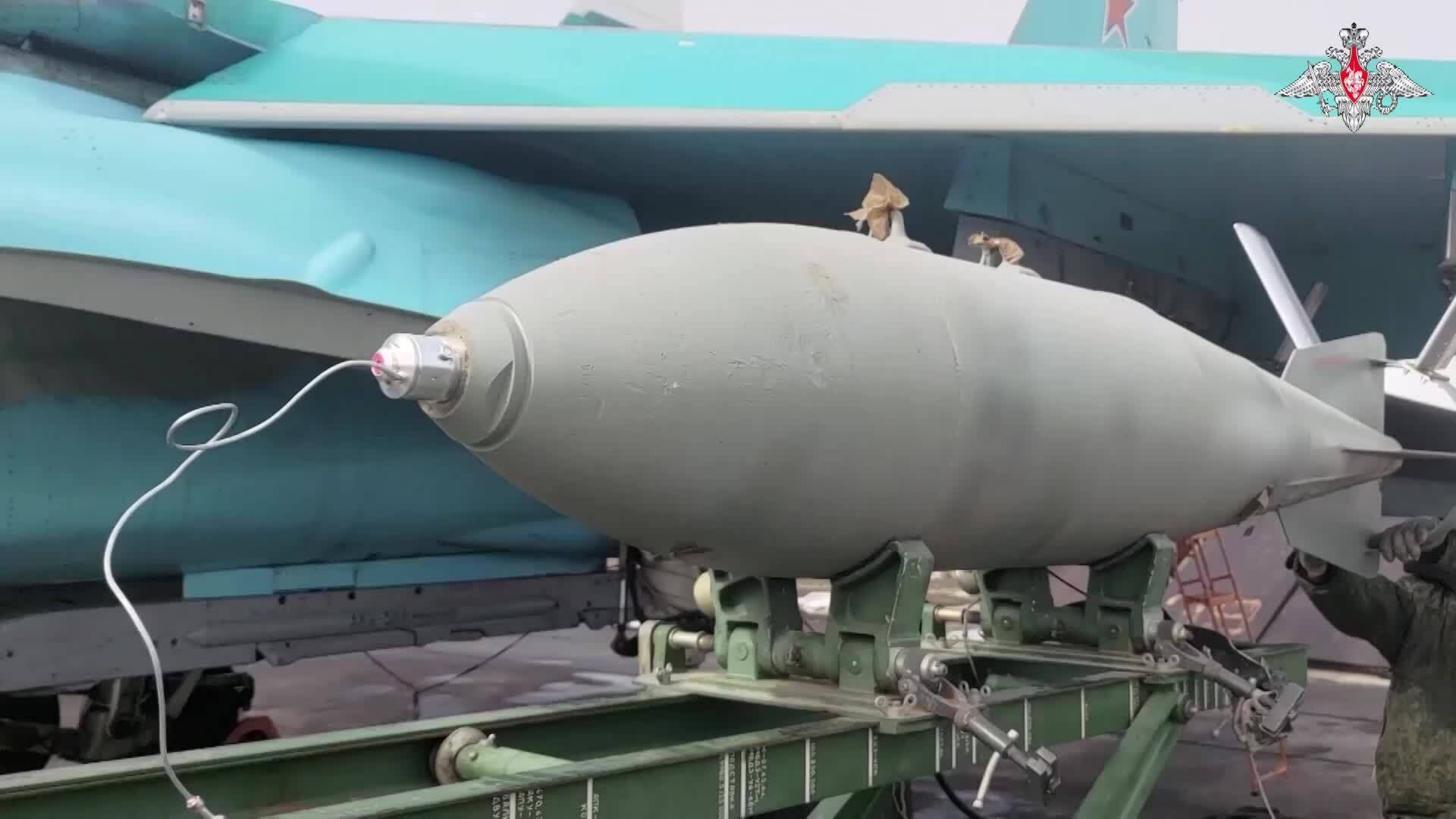
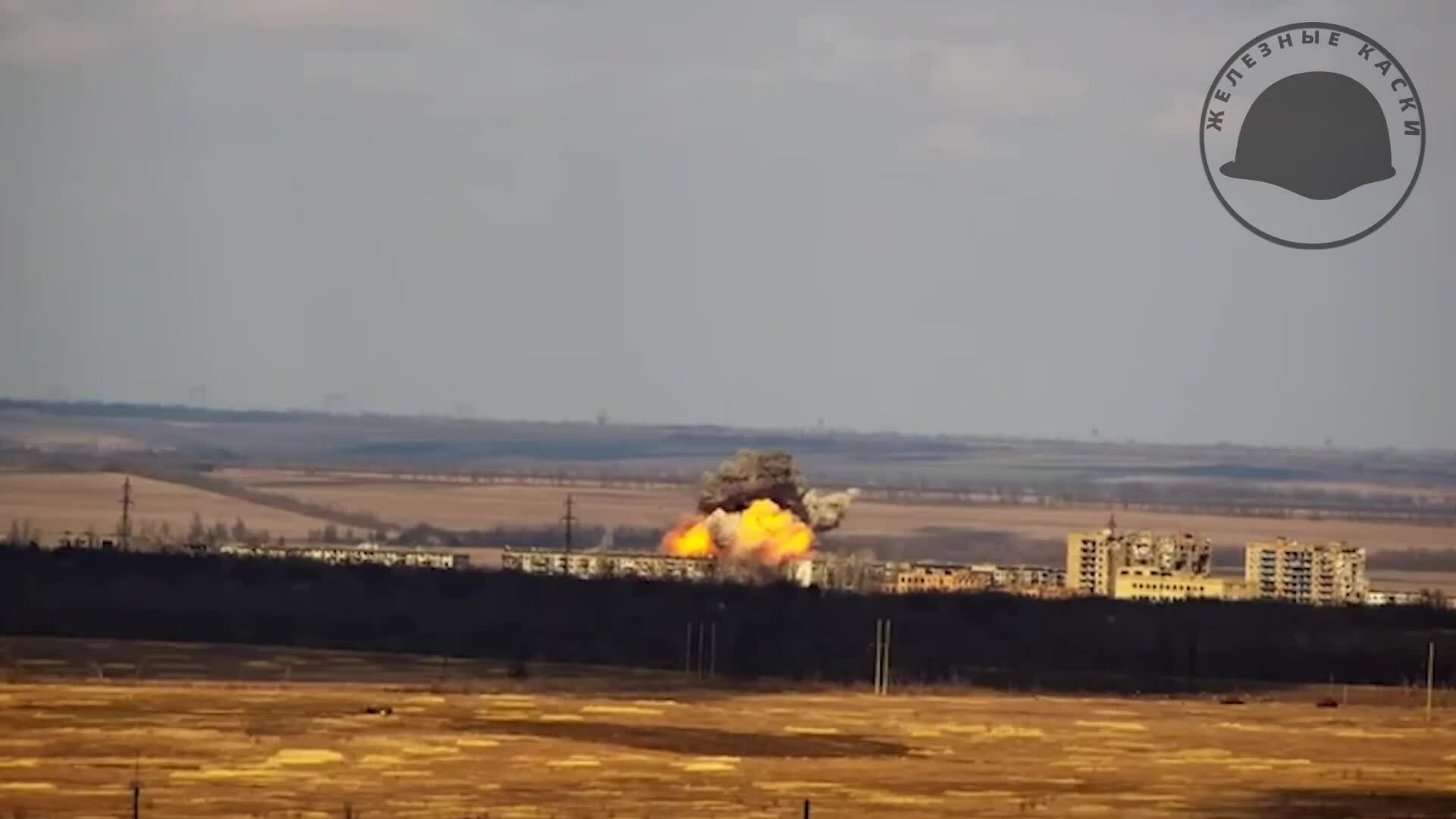


![[Photo] Party and State leaders visit former President Tran Duc Luong](https://vphoto.vietnam.vn/thumb/1200x675/vietnam/resource/IMAGE/2025/5/24/960db9b19102400e8df68d5a6caadcf6)
![[Photo] Ho Chi Minh City holds funeral for former President Tran Duc Luong](https://vphoto.vietnam.vn/thumb/1200x675/vietnam/resource/IMAGE/2025/5/24/9c1858ebd3d04170b6cef2e6bcb2019e)






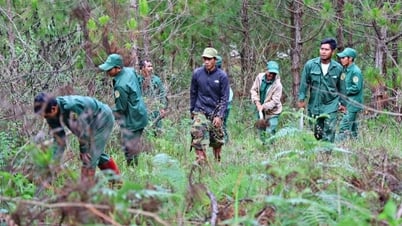














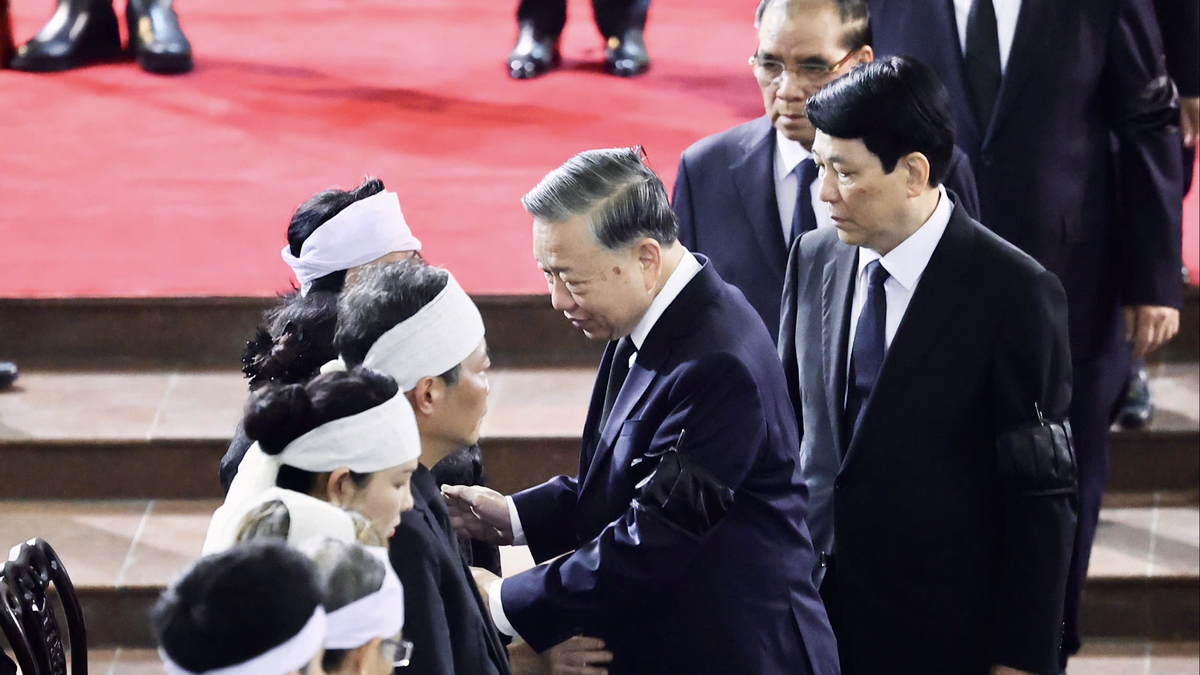



































































Comment (0)